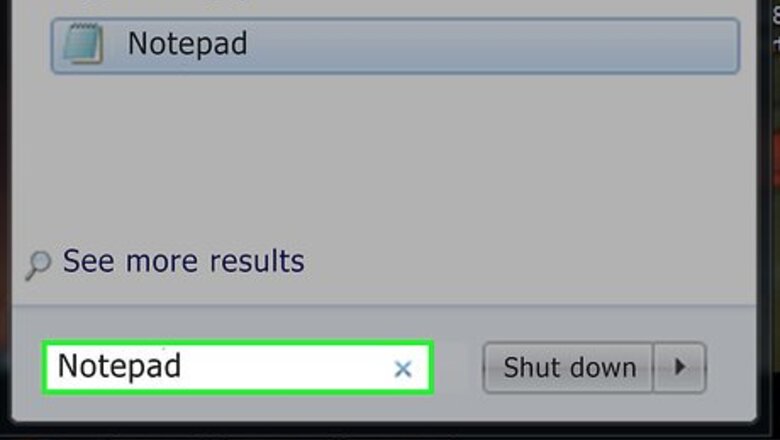
views
Learning Batch Basics
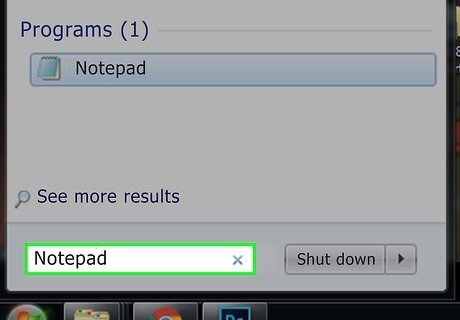
Open Notepad. Notepad allows you to create code as a text file and then save it when you're done as a batch file. You can open Notepad by opening Start Windows Start, typing in Notepad, and clicking the blue Notepad app icon at the top of the menu. Notepad is commonly used to convert text files into batch files, but you can write your batch file's text virtually anywhere.

Learn some basic batch commands. Batch files run a series of DOS commands, so the commands that you can use are similar to DOS commands. Some of the more important ones include: ECHO - Displays text on the screen @ECHO OFF - Hides the text that is normally output START - Run a file with its default application REM - Inserts a comment line in the program MKDIR/RMDIR - Create and remove directories DEL - Deletes a file or files COPY - Copy a file or files XCOPY - Allows you to copy files with extra options FOR/IN/DO - This command lets you specify files. TITLE- Edit the title of the window.

Write a program to create a directory. One of the easiest ways to learn how to create batch files is to focus on doing basic tasks first. For example, you can use a batch file to quickly create multiple directories: MKDIR c:\example1 MKDIR c:\example2
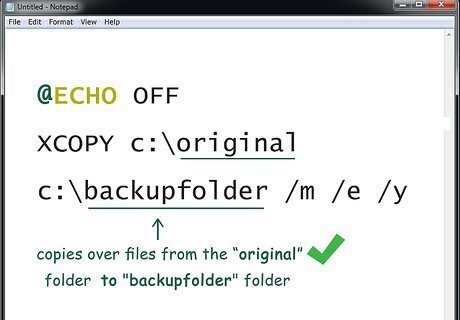
Write the code to make a basic backup program. Batch files are great for running multiple commands, especially if you configure it to be able to run multiple times. With the XCOPY command, you can make a batch file that copies files from select folders to a backup folder, only overwriting files that have been updated since the last copy: @ECHO OFF XCOPY c:\original c:\backupfolder /m /e /y This copies over files from the folder "original" to the folder "backupfolder". You can replace these with the paths to the folders you want. /m specifies that only updated files will be copied, /e specifies that all subdirectories in the listed directory will be copied, and /y keeps the confirmation message appearing every time a file is overwritten.
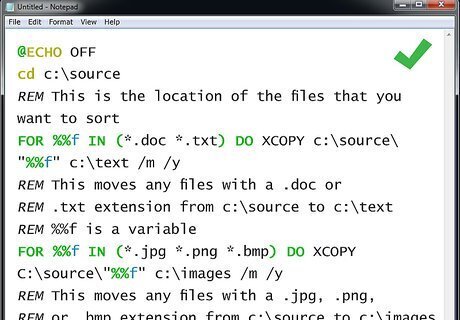
Write a more advanced backup program. While simply copying the files from one folder to another is nice, what if you want to do a little sorting at the same time? That's where the FOR/IN/DO command comes in. You can use that command to tell a file where to go depending on the extension: @ECHO OFF cd c:\source REM This is the location of the files that you want to sort FOR %%f IN (*.doc *.txt) DO XCOPY c:\source\"%%f" c:\text /m /y REM This moves any files with a .doc or REM .txt extension from c:\source to c:\text REM %%f is a variable FOR %%f IN (*.jpg *.png *.bmp) DO XCOPY C:\source\"%%f" c:\images /m /y REM This moves any files with a .jpg, .png, REM or .bmp extension from c:\source to c:\images
Display some text. If you want to know what is happening in your batch file but don't want to see all the commands, you could program the batch file to print some text that explains what the batch file does. You can print text with ECHO. For example: @ECHO OFF MKDIR c:\example1 ECHO Created directory example1 You can change the color of the output with COLOR bf, where b is the background and f is the foreground color, both a hexadecimal number. Following colors are possible: Number Color Number Color 0 black 8 dark grey 1 dark blue 9 blue 2 dark green a green 3 dark turquoise b turquoise 4 dark red c red 5 dark magenta d magenta 6 dark yellow e yellow 7 light grey f white For example, red text on a dark green background would be displayed with COLOR 2c You need run the batch file from the command line to see the text, because else the window will close too fast to actually read the text you printed.
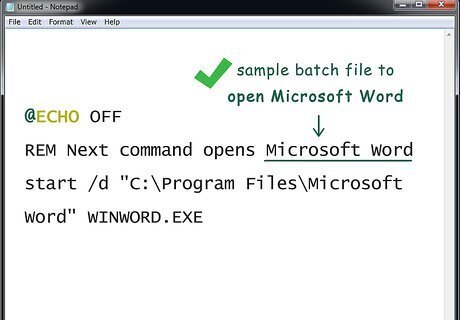
Experiment with different batch commands. If you want inspiration, you can check out the sample batch text at the end of this article.
Saving the Batch File
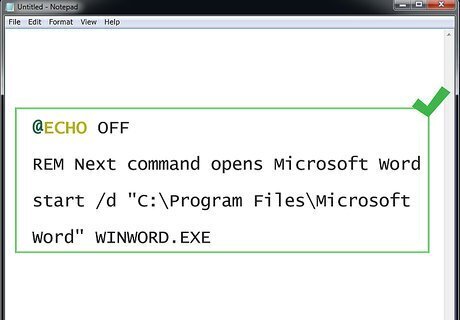
Finish entering your batch file's text. Once you've completed and proofread your batch file, you can proceed with saving it as an executable file.
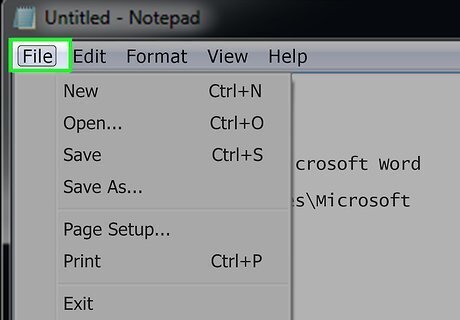
Click File. It's in the top-left corner of the Notepad window. A drop-down menu will appear.
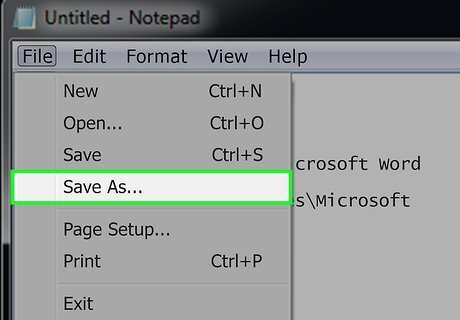
Click Save As…. This option is in the File drop-down menu. Clicking it prompts the Save As window to open.
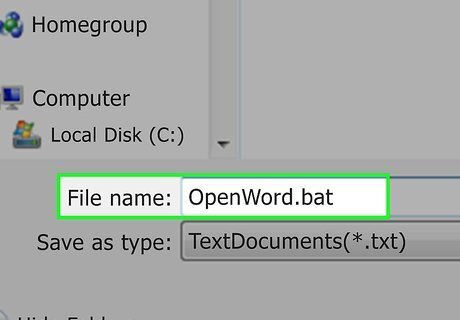
Enter a name and the ".bat" extension. In the "File name" text box, type in whatever you want to name your program followed by .bat. For a program named "Backup", for example, you'd type in Backup.bat here.

Click the "Save as type" drop-down box. You'll find it near the bottom of the Save As window. A drop-down menu will appear.
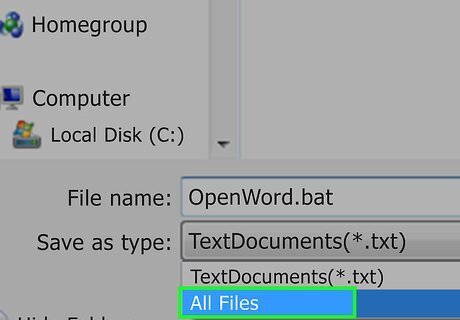
Click All Files. It's in the drop-down menu. This will allow your file to be saved as whatever its extension is (in this case, ".bat").
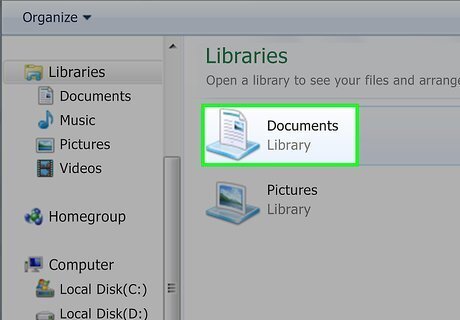
Select a save location. Click a folder on the left side of the window (e.g., Desktop) to do so.
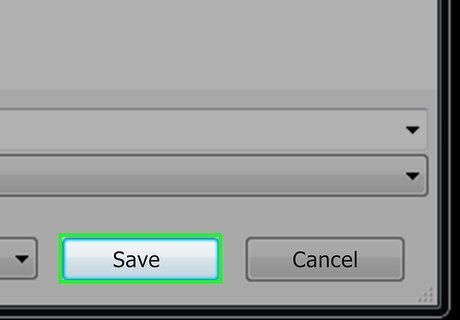
Click Save. It's in the bottom-right corner of the Save As window. The window will close.
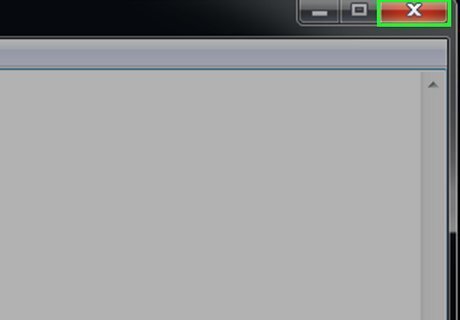
Close your Notepad file. It will be saved as a batch file in your selected location.
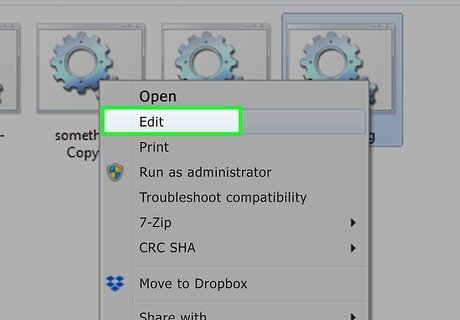
Edit the batch file's contents. At any time, you can right-click your batch file and click Edit in the resulting drop-down menu. This will open the batch file as a Notepad document; at this point, you can make any changes and then save the file by pressing Ctrl+S. The changes will immediately be reflected when you run the batch file.



















Comments
0 comment